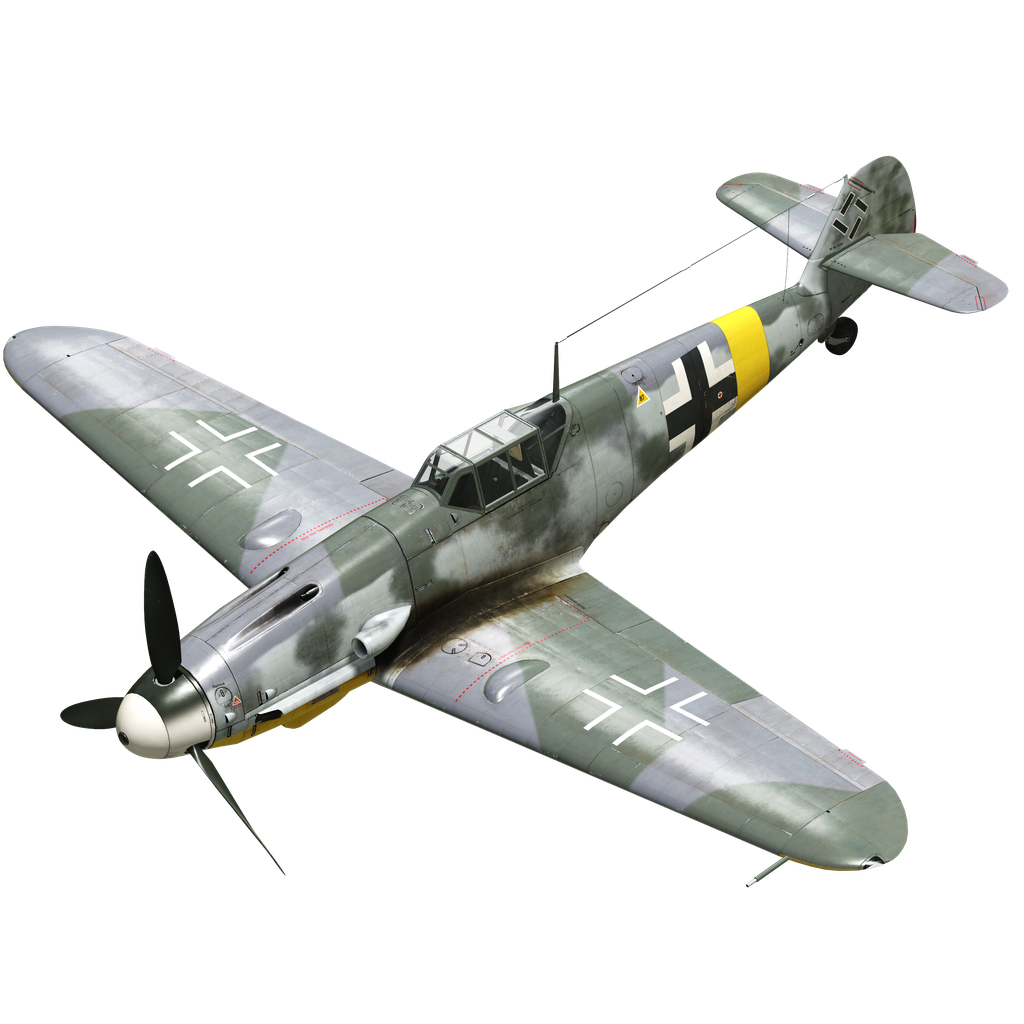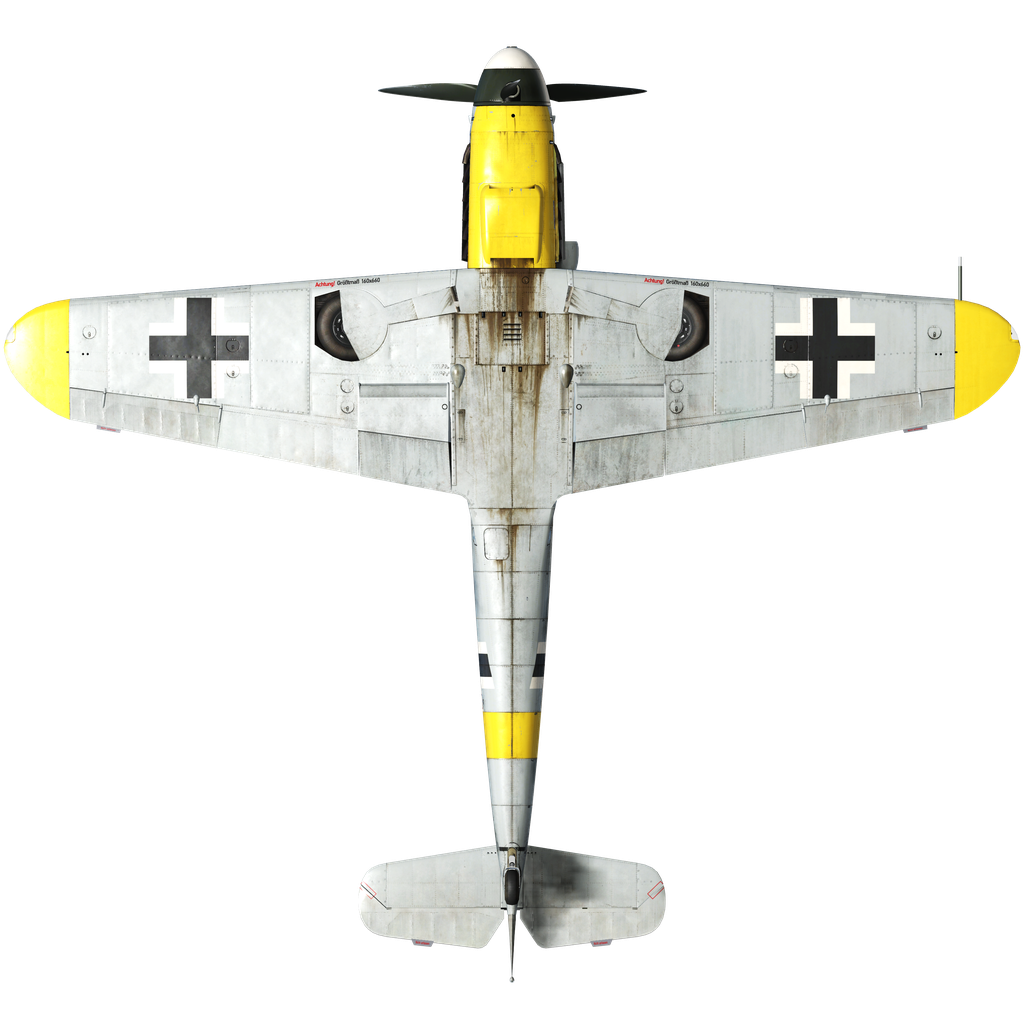The Messerschmitt Bf 109, the most mass-produced fighter of Hitler's Germany, appeared in 1934 in response to the Luftwaffe's request for the latest single-engine monoplane fighter. It was an all-metal low-wing aircraft with a water-cooled engine, retractable landing gear, and a tail wheel. The prototype's first flight took place on May 28, 1935, and in November 1936, the first aircraft were sent for military testing in Spain, where a civil war was raging. This decision was due to the failure of the He 51 biplanes, which were losing air battles to Soviet fighters. The Spanish debut ended successfully for the plane, mainly due to continuous improvements. From 1936 to 1938, 5 models were built — from the Bf 109 A "Anton" to the Bf 109 E "Emil" — and this latter model became the main machine in service with fighter squadrons.
Taking into account the experience of the war, the Bf 109 F "Friedrich" was introduced in 1940, and in early 1942 a new DB 605A engine with a takeoff power of 1457 hp was ready for series production. The increase in power meant an increase in engine weight, which necessitated the strengthening of some structural elements and led to the creation of a new, faster modification known as the Bf 109 G "Gustav." The Bf 109 G-1 and Bf 109 G-2 were followed by the Bf 109 G-3, which was produced in small numbers, and the Bf 109 G-4 with the new DB 605A-1 series engine. In the early period of this engine's use, the so-called "emergency" mode (increased boost of 1.42 ATA to increase performance) was forbidden and the boost was limited to 1.3 ATA due to failures and resulting accidents, but this mode was reintroduced when the causes of the problems were investigated.
Structurally, the B 109 G-4 did not differ much from its predecessor, the G-2, and was also produced with a conventional rather than a pressurized cockpit and without a high-altitude engine boost system. But all aircraft of the G-4 modification (as well as the G-3) had a small but important change in the landing gear design. On all Messerschmitts, the landing gear struts, which were attached to the fuselage, were retracted outward into the wing to increase the width between the wheels. As a result, the load on one side of the wheel was greater than on the other. As a result, with increasing weight on the "Gustavs," even enlarged wheels wore out faster and often broke during landings and taxiing. To eliminate this disadvantage, the wheel rotation axes were rotated almost parallel to the ground. First introduced on the last G-2 series, this design became standard on the G-4. In addition to the landing gear, the radio was replaced with a newer and better model. The aircraft was available in conventional and tropical versions — with dust filters, dust and sand seals, and desert survival kits. In terms of flight and tactical characteristics, it did not differ from the Bf 109 G-2.
-
R1 - installed an ETC 500 rack that could carry a 250 kg bomb or a 300-liter drop tank under the fuselage;
-
R2 - reconnaissance aircraft. The Bf 109 G-4/R2 was transformed into a fighter-bomber reconnaissance plane with an Rb50/30 camera and the ETC 50/VIIId bomb rack designed to carry four SC 50 bombs or a 300-liter drop tank, while similar reconnaissance planes were also produced in factories: such a model was designated Bf 109 G-4/U3.
-
R3 - long-range reconnaissance plane. Under the wing of such a machine were installed racks for carrying two additional drop tanks of 300 liters, which were released in flight when empty of fuel. Instead of an ammunition box, an additional oil tank was installed in front of the cockpit. Fuel was pumped from the outboard tanks to the fuselage tank by the pressure drop caused by the engine’s supercharger. According to some reports, the range of such a reconnaissance plane was 1250 km;
-
R6 - installed two underwing gunpods with 20 mm MG 151/20 cannons;
-
R7 - produced only for the G-4. These aircraft were also equipped with radio direction-finding equipment
The aircraft was built by the same factories as the Bf 109 G of previous modifications. A total of 1242 Bf 109 G-4s were produced between September 1942 and May 1943, including 377 of the tropical variant for use in the Mediterranean.
Bf 109 G-4s were used on all fronts and were delivered to combat units from November 1942.
Sources used:
1. W. Creen "The Warplanes of the Third Reich", Galahad Books, 1986
2. "Wings of the Luftwaffe" Translation of W. Green's book "Combat Airplanes of the Third Reich" by A. Firsov, 1993.
3. "Yak-1,7,9,3/ Bf 109 fighters" Journal of Aviation and Cosmonautics, 5-6, 1999.
4. Materials of the site airwar.ru






